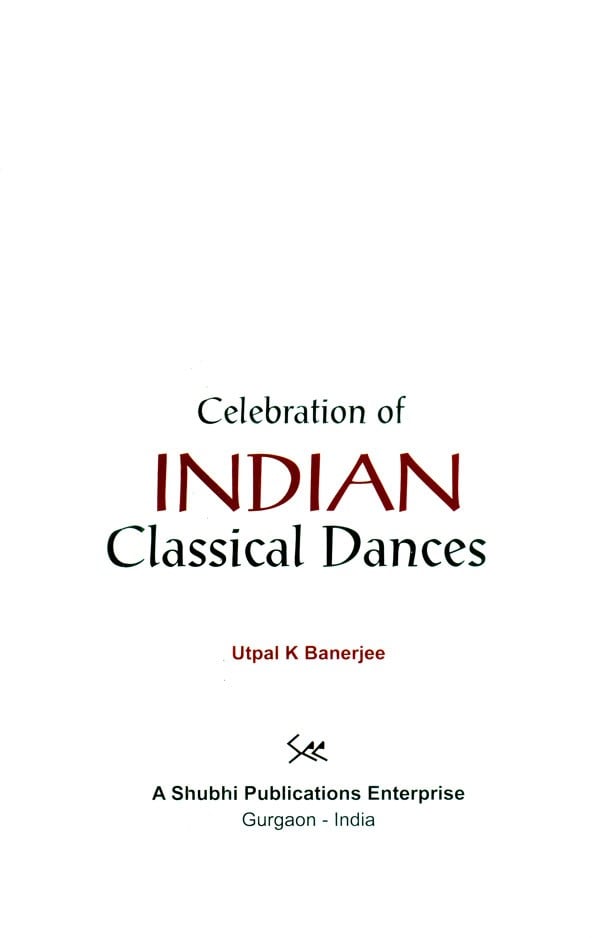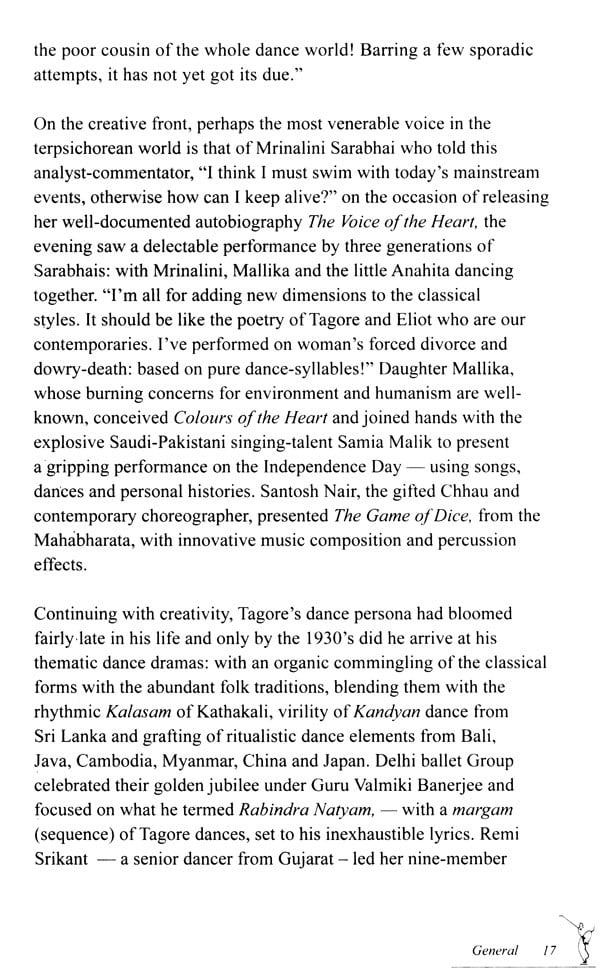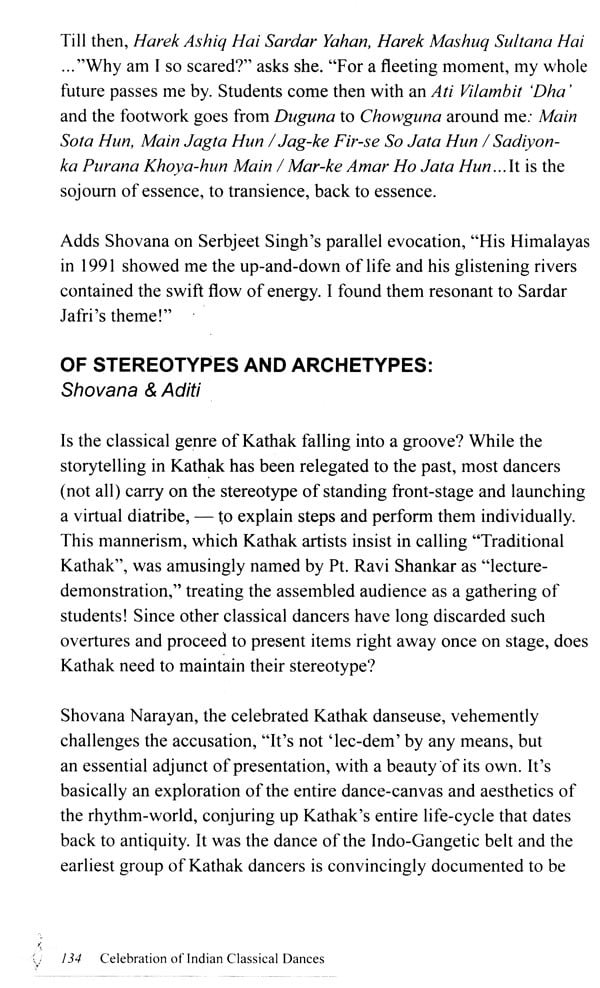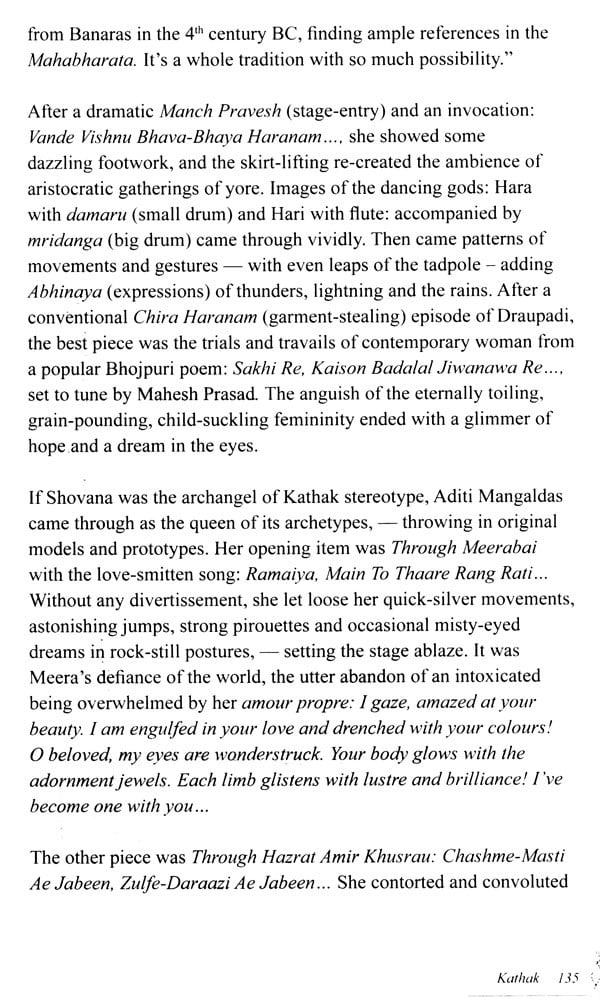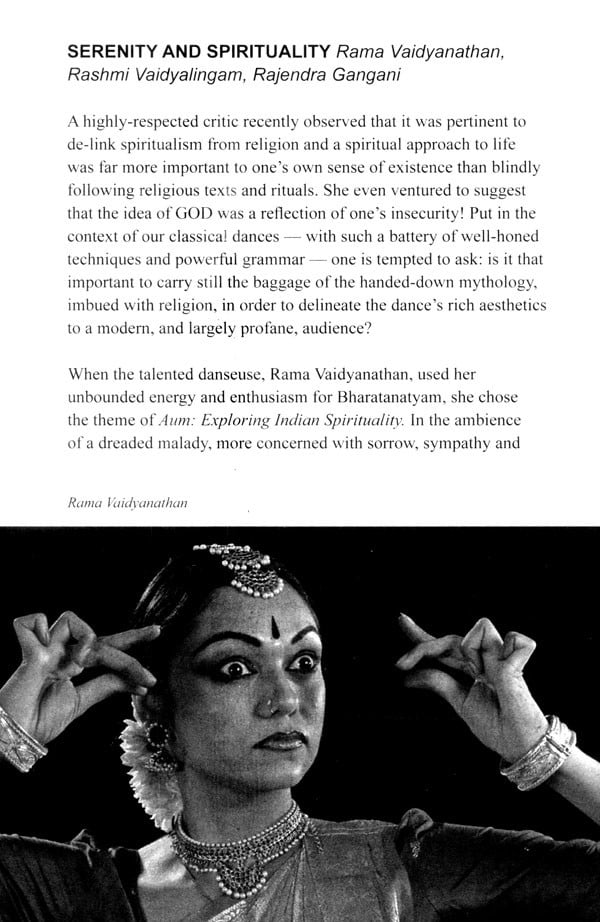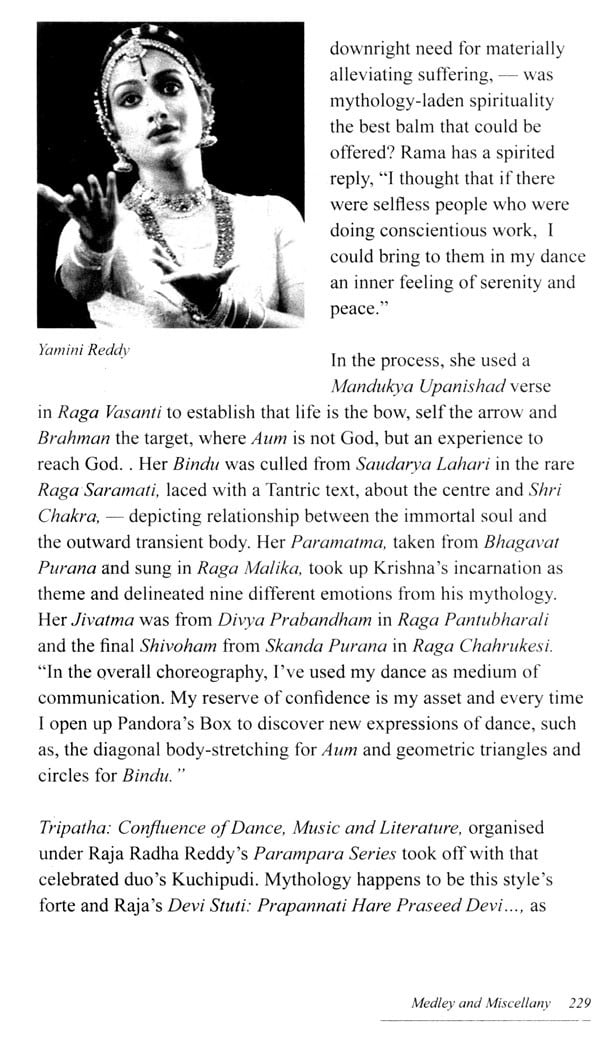
Celebration of Indian Classical Dances
Book Specification
| Item Code: | UBE983 |
| Author: | Utpal K. Banerjee |
| Publisher: | Shubhi Publications, Gurgaon |
| Language: | English |
| Edition: | 2012 |
| ISBN: | 9788182902879 |
| Pages: | 244 (Throughout B/w Illustrations) |
| Cover: | HARDCOVER |
| Other Details | 9.00 X 6.00 inch |
| Weight | 490 gm |
Book Description
This is an unusual stance, steering clear of high scholarship and capturing, instead, the aura and aroma of practice alongside personality. All in all, the book - lavishly illustrated tries to faithfully mirror the exciting times that Indian dance lives in today.
In the nineties. He was utilized by Indian Council for Cultural Relations (ICCR) to lecture on Indian Art and Culture in Canada in 1990 and in South America in 1998. He gave similar lectures for the IFS probationers and in the Foreign Service Institute (FSI) to the Afro-Asian diplomats. His comprehensive book on Indian Performing Arts has gone into several editions. His contribution on "Ruled by the Religion" has been included in the magnum opus Spectacular India, published from the USA in 2000.
He has been regularly writing on the arts and culture in several newspapers and journals, including India Perspective, the magazine from Ministry of External Affairs. He has a regular column on performing arts in The Pioneer every week. He has been a regular contributor on cultural and professional programmes to London BBC, All India Radio and Indian Television over last 32 years. His other two books, Indian Performing Arts: A Mosaic and Millennium Glimpses of Indian Performing Arts cover the scenario till the current decade. His latest book is Indian Theatre in 21st Century.
On Indian puppetry, his collaborative books (with Sampa Ghosh) are: Indian Puppets, Indian Puppetry and Puppet Stories, and Puppets of India and the World.
He Sr. Fellowship from Min. of Culture, Govt. of India, 2008-10, for working on Towards Maitreya: The Future Buddha. He has recently been awarded Padma Shri by President of India "in recognition of distinguished service in literature and education."
Around Independence, the resurrection and resuscitation of Indian classical and contemporary dances have been an extraordinary phenomenon. What was languishing especially in the previous century and just about surviving in the quarters of courtesans and in the temples in the hands of god's maids - the virtual torch-bearers of a decaying heritage - got a fresh lease of life and connoisseurs gave them flesh and blood. The major form of Bharatanatyam and an exhilarating form of contemporary dance were both given fresh energy simultaneously in the South by Rukmini Devi Arundale and in the north by Uday Shankar, while in the East, Tagore gave dulcet touch to his complete dance-dramas; and all these happened remarkably together in the time-frame of the 1930's. Post- Independence, while the momentum gathered for the other seven genres of classical dances, contemporary styles did not progress much after Shankar's passing away in the 70's. There has been enviable progress, on the whole, in the entire dance arena in the recent years and Gurukul traditions have continued to flourish. This book is an illustrative recapitulation of the throbbing dance- scene of today, with many glimpses provided and insights offered.
**Contents and Sample Pages**
